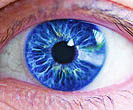Halloween Candy May Cause Obesity, Study Finds
Boulder, October 28, 2008 -- A seven-year dietary and fitness study released today reaches the disturbing conclusion that Halloween candy, long a staple of American holiday witches, goblins, vampires and presidents of all ages, may be a contributing factor in obesity.
The study, which tracked the flab ratios and eating habits of over 4,000 young individuals in 20 cities across the United States, concludes that "Halloween candy, if consumed in excessive quantities, almost certainly contributes to short-term and potentially long-term weight gain."
Halloween has long been revered by the nation's youth as a once-a-year opportunity to roam the neighborhood in colorful costumes and plastic masks, all the while accumulating copious quantities of highly sweetened non-nutritious foodstuffs by hounding and harassing homeowners, a practice known as "Trick-or-treating".
Popular Halloween costumes this year include, in addition to the traditional staple outfits of witches, goblins, magicians and characters viewed on Saturday morning infomercials, such frightening new favorites as the Scooter Libby mask, the Supreme Court Justice Samuel Alito costume, and the Frankencheney monster, a skin-crawling morph of Dick Cheney and Frankenstein.
The Halloween candy study, which was commissioned by the American Bran Manufacturers and performed by the University of Colorado's Flab Institute, found that today's average youngsters accumulate and consume what could amount to dangerous quantities of sweetened confections during the holiday.
"The typical dietary recommendation for candy bars, jelly beans, chewing gum and so forth is a maximum intake of 22 pounds per year for a typical 12-year-old child," said Dr. Skimpy deGhoul, who headed the dietary study. "The youngsters we've followed over the past seven years generally gathered and ate that much candy in a single night – and this is in addition to their regular annual intake, which is already pushing the top end of the scale. They're not only porking out at a rate that can lead to what we call 'galloping obesity', they're actually risking diabetic shock."
According to Dr. deGhoul's projections, young Halloween-celebrating Americans gain a combined total of nearly 70 million pounds of flab between October 31 and November 2, the time by which most of their Halloween loot is generally fully consumed or confiscated.
"That number's a lot more frightening than anything you're likely to see on Halloween night," said Dr. deGhoul. "These kids gain an average of 2.2 pounds in less than three days. And given the levels of lassitude, sloth and general lack of exercise experienced by most teens and pre-teens these days, there's very little likelihood that they're ever going to lose that extra weight. For some of them, the only exercise they get in a year is that one night of Halloween candy collection."
Dr. deGhoul said that the children they tracked, who were between six and eleven years of age at the commencement of the study, gained weight at a rate roughly 30% higher than a control group of children who, for religious, cultural or other reasons, did not participate in Halloween trick-or-treating. All the children in the study were either significantly overweight or actually obese by the study's conclusion.
"Their flab accumulation was steadily higher throughout the year than non-trick-or-treaters, and would then spike hugely around the first of November each year," said Dr. deGhoul.
"They would then continue from that new plateau, only at a slightly increased rate," he continued. "In other words, these annual jolts of massive quantities of candy were, in some respects, cumulative. The more sugar their bodies absorbed, the more they could tolerate and the more their bodies craved. Each year, therefore, they would perform longer trick-or-treat rounds, accumulating ever larger bags of candy. And the candy would be consumed in a shorter time period each year, leading to an even more harmful spike in sugar and fatty tissue accumulation."
Dr. deGhoul said any specific recommendations regarding the practice of collecting and binge-consuming Halloween candy were outside the scope of the project.
"However, giving the trick-or-treaters an apple or an orange instead of candy once in a while," he said, "might not be such a bad thing. That is, if you don't mind having to buy a new mailbox and scrape toilet paper out of all the trees in your front yard once a year."
By Ion Zwitter, Avant News Editor
Related stories
- Godzilla-like creature ”natural phenomenon”, says TEPCO chairman
- Somali Pirates Hijack International Space Station
- God Contrite About "Collateral Damage" in Huckabee Tornado Smite Attempt
- Cognitive Dissonance May Provide Cure To Non-Existent Global Warming
- Sam Brownback Pregnancy May Put Squeeze On Presidential Bid
- Oil Exec Sequestration May Provide Answer to Global Warming
- Texas Rings In New Clean Air Rules With Tire Fire
- God Loses Dice
- Lipodiesels Shine at 2010 LA Auto Show
Copyright © 2005-2505 AvantNews.com. All rights reserved.
Avant News contains satire and other fictional material, provided for entertainment purposes only. Disclaimer. Syndicate. Privacy.











